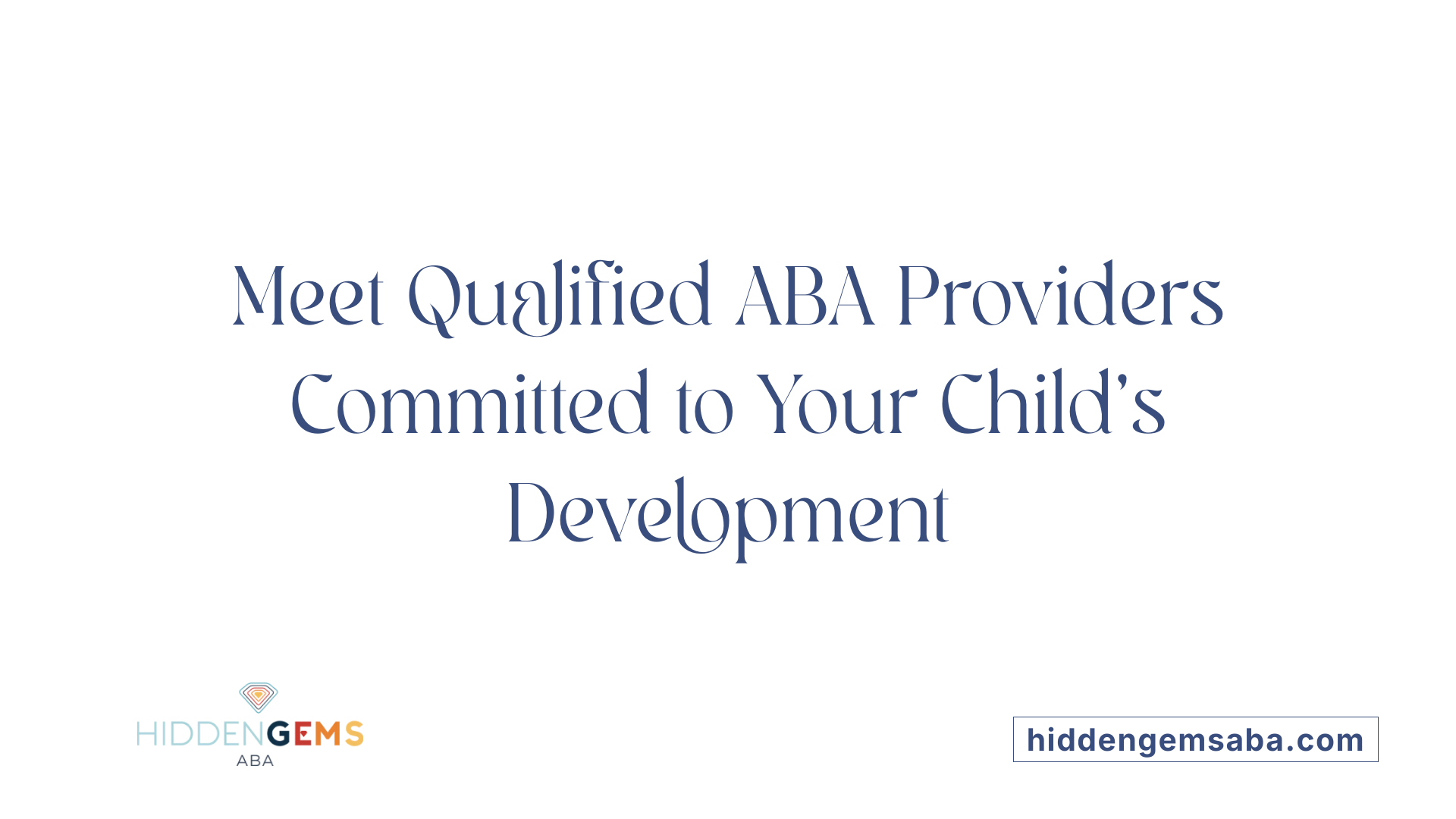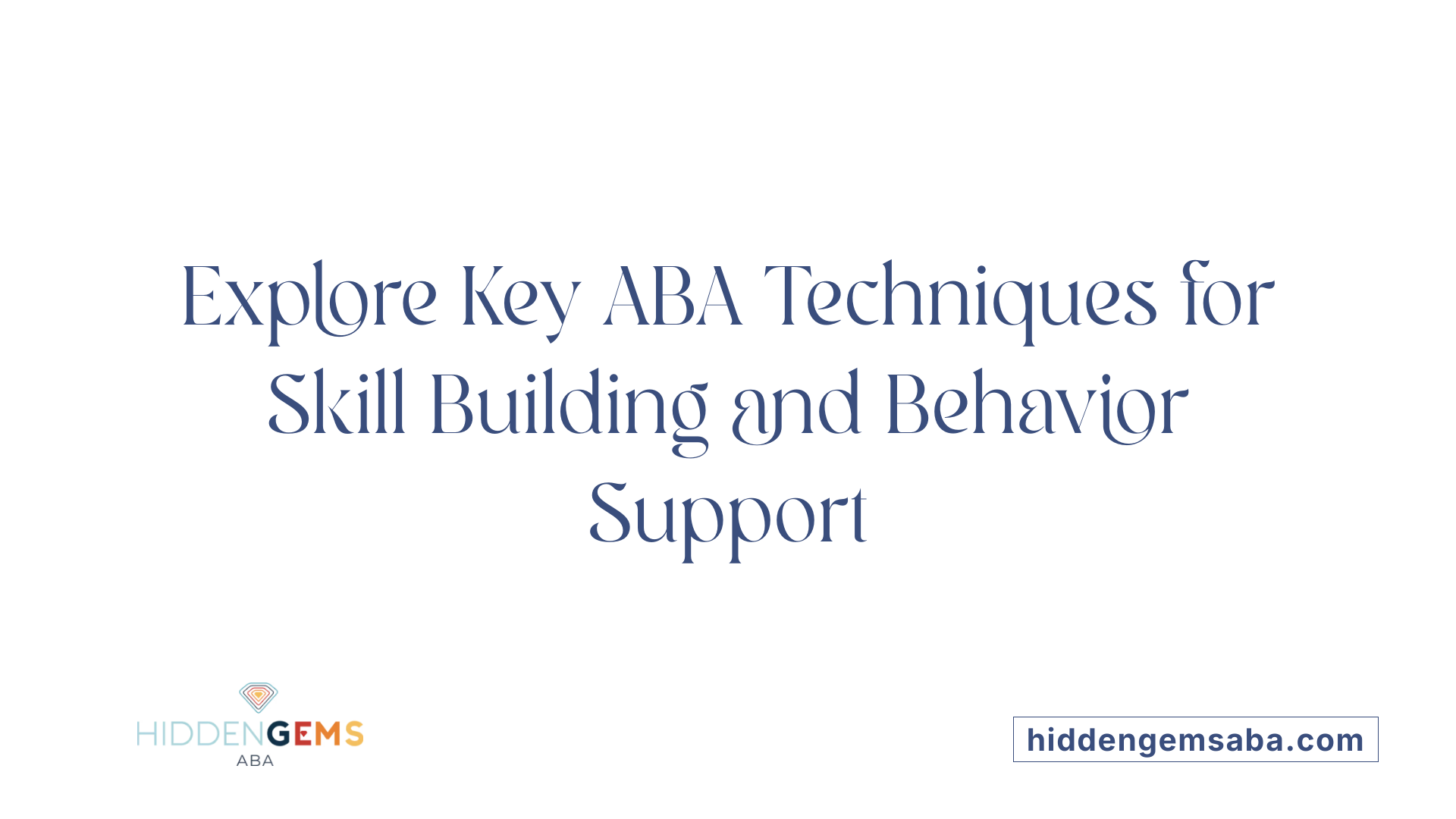Navigating New Environments with Confidence
Transitions between home and school present significant challenges for children with autism due to their need for routine, predictability, and difficulties with receptive language. Applied Behavior Analysis (ABA) therapy offers structured, evidence-based strategies to support these transitions, helping children build communication, social, and self-care skills and manage anxiety during changes in environment. This article explores how ABA therapy promotes smoother transitions by enhancing essential skills and employing tools such as visual schedules and behavioral interventions tailored to each child’s unique needs.
Understanding ABA Therapy and Its Role in Supporting Children with Autism
What is Applied Behavior Analysis (ABA) therapy and how does it help individuals with autism?
Applied Behavior Analysis (ABA) therapy is a scientifically-supported approach aimed at improving specific skills and reducing harmful behaviors in individuals with autism. This therapy uses strategies like positive reinforcement, prompting, and careful analysis of antecedents, behaviors, and consequences (known as the ABC framework) to encourage positive behavior changes.
ABA therapy is highly personalized, crafted to meet the unique strengths and challenges of each child. Therapists perform detailed assessments and work closely with families to develop programs that focus on key developmental areas.
What key areas does ABA therapy target?
ABA therapy centers on enhancing communication, social interaction, and daily living skills, all essential for school readiness and overall independence. It improves both expressive communication (helping children express their needs) and receptive communication (understanding others).
Social skills development includes teaching children to recognize social cues and practice turn-taking, enabling better engagement with peers and teachers. Moreover, ABA addresses self-care skills such as dressing, grooming, and feeding to foster independence required for daily school participation.
How does ABA therapy promote independence and enhance quality of life?
With a focus on individualized goals, ABA encourages the integration of academic skills like reading and math into daily routines. Techniques like Pivotal Response Training (PRT) increase motivation and engagement in learning activities.
Behavioral challenges are managed using systematic strategies such as discrete trial training, task analysis, prompting, and gradual fading of support. These approaches help reduce behaviors that interfere with learning and promote positive routines.
ABA also supports managing transitions, a common challenge for children with autism who thrive on routine and predictability. This includes teaching strategies to reduce transition times and reliance on adults, often using visual tools like timers and schedules to reduce anxiety and enhance independence.
Combining ABA with occupational therapy addresses broader developmental needs, emphasizing communication, social skills, and self-care, which collectively prepare children for successful school experiences and a better quality of life.
ABA Therapy Providers: Qualifications and Expertise Ensuring Effective Support

Who typically provides ABA therapy and what qualifications do they have?
ABA therapy is predominantly delivered by skilled professionals such as Board Certified Behavior Analysts (BCBAs), licensed behavior therapists, and specialists trained in behavioral interventions. These practitioners usually hold at least a bachelor's degree in psychology, education, or closely related fields, followed by a master's degree focusing on applied behavior analysis or equivalent studies.
Their preparation includes extensive supervised clinical fieldwork, often accumulating between 1,000 to 2,000 hours. Afterward, they must earn certification — notably the BCBA credential — which demands passing a comprehensive exam and engaging in ongoing continuing education to maintain proficiency.
These professionals apply well-established, evidence-based behavioral techniques tailored to individual children’s needs by working in diverse environments such as hospitals, schools, community centers, and private practices. They strive to foster positive developmental and behavioral improvements through ethical practice and continual professional growth.
Educational and Certification Requirements
- Bachelor's degree in psychology, education, or related fields
- Master's degree specializing in applied behavior analysis or a similar area
- Completion of 1,000–2,000 hours of supervised fieldwork
- Passing the BCBA certification exam
- Commitment to ongoing continuing education
Settings Where ABA Therapy Is Delivered
- Hospitals and clinics
- Educational institutions
- Community and recreational centers
- Private therapy practices
Importance of Ongoing Professional Development
Maintaining certification and licensure requires ABA providers to continuously update their knowledge and skills. This commitment ensures they stay informed about the latest research, treatment techniques, and ethical standards to offer the most effective support to children with autism.
Key ABA Techniques Facilitating Skill Development and Behavior Management

What are the common techniques used in ABA therapy?
ABA therapy employs several structured techniques to promote skill acquisition and manage behaviors effectively. One fundamental method is discrete trial training (DTT), which uses highly structured, repetitive teaching sessions to focus on specific skills. This is often complemented by natural environment training (NET), where children learn and practice skills within their everyday settings, encouraging generalization.
Modeling is another central technique, involving demonstrating a behavior for the child to imitate. To support independent skill performance, therapists use prompting (providing hints or assistance) and fading (gradually reducing help) to encourage autonomy.
For mastering more complicated sequences, behavior chaining breaks tasks into smaller manageable steps. For example, dressing or grooming may be segmented into individual actions to ensure a child learns each phase thoroughly.
Behavior management in ABA relies heavily on reinforcement strategies. Both positive reinforcement (rewarding desired behaviors) and negative reinforcement (removing an unwanted stimulus when the desired behavior occurs) play critical roles. Additional strategies like behavior contracts, redirection, and script fading tailor interventions to individual challenges, ensuring that the behavioral supports align with each child’s unique profile.
ABA Techniques Overview
| Technique | Description | Purpose |
|---|---|---|
| Discrete Trial Training (DTT) | Structured, repetitive teaching of individual skills | Skill acquisition and precision |
| Natural Environment Training (NET) | Learning in everyday settings | Generalizing skills to real life |
| Modeling | Demonstrating behaviors to imitate | Teaching new behaviors |
| Prompting and Fading | Providing then gradually withdrawing assistance | Increasing independence |
| Behavior Chaining | Breaking complex tasks into smaller steps | Mastery of multi-step activities |
| Reinforcement | Using rewards or removal of adverse stimuli | Encouraging positive behaviors |
| Additional Strategies | Behavior contracts, redirection, script fading | Tailored behavior management |
Customized ABA Programs Targeting School Readiness and Smooth Transitions
How Are ABA Programs Tailored to Individual Strengths and Challenges?
ABA therapy is customized specifically to each child's unique strengths and challenges. Practitioners conduct ongoing assessments and collaborate closely with family members to design effective, individualized interventions. This tailored approach ensures that therapy targets the areas requiring the most support while leveraging the child’s natural abilities.
What Communication, Social, and Self-Care Skills Are Emphasized?
ABA therapy enhances expressive and receptive communication skills, helping children express needs and understand others clearly. Social interaction skills such as interpreting social cues and turn-taking are also developed to facilitate meaningful engagement with peers and teachers. Additionally, self-care abilities like dressing, grooming, and feeding are trained to foster the independence essential for successful school participation.
How Are Academic Skills and Motivation Integrated?
ABA incorporates academic skills such as reading and math into the child’s daily routines. Techniques like Pivotal Response Training (PRT) are used to boost motivation and engagement during learning activities, making academic tasks more appealing and accessible for children with autism.
In What Ways Are Behavioral Challenges Addressed?
Individualized plans use systematic ABA techniques—discrete trial training, task analysis, prompting, and fading—to reduce behaviors that might hinder learning. These strategies promote positive behaviors and support smooth transitions by increasing predictability and easing anxiety. Visual tools like schedules and timers are employed to help children anticipate changes, reducing transition times and reliance on adult prompts.
By focusing on personalization, communication, socialization, academics, and behavior management, customized ABA programs effectively prepare children with autism for school and facilitate smoother transitions throughout the day.
Managing Transitions Between Home and School Using ABA Strategies

What Challenges Do Children with Autism Face During Transitions?
Transitions between home and school can be particularly challenging for children with autism. Their strong need for routine and predictability, combined with difficulties in receptive language and elevated anxiety levels, often make these moments stressful. These challenges can lead to increased resistance or behavioral outbursts that hinder smooth transitions and affect school readiness.
How Are Visual Timers, Schedules, and Transition Cards Used?
ABA therapy employs visual timers, schedules, and transition cards as powerful tools to support children during these difficult transitions. Visual aids help children anticipate what is coming next, providing a clear structure that reduces uncertainty and associated anxiety. By making the sequence of events explicit, these materials foster greater independence and diminish challenging behaviors.
What Teaching Strategies Help Reduce Transition Times and Reliance on Adult Prompts?
Another focus in ABA is teaching children strategies that minimize transition times. This involves gradually reducing their dependence on adult prompts through techniques like prompting and fading. By encouraging self-management skills, children learn to shift between environments more independently and confidently.
How Is the Antecedent-Behavior-Consequence (ABC) Framework Applied?
ABA practitioners carefully analyze the antecedent-behavior-consequence (ABC) model to shape interventions around transitions. By understanding what triggers challenging behaviors (antecedents) and the consequences that follow, therapists develop plans to increase predictability and establish positive routines. This approach promotes smoother transitions by preempting difficulties and reinforcing desired behaviors.
Measuring the Impact of ABA Therapy on Transition Success and Development

How is the effectiveness of ABA therapy measured for individuals with autism?
ABA therapy effectiveness is measured through ongoing assessments that systematically track progress in areas like communication, social skills, independence, and behavior. Practitioners collect data during therapy sessions using methods such as functional behavior assessments (FBA) and direct observations to identify behavior patterns and monitor changes over time.
Assessment methods for tracking progress during transitions
Transitions can be particularly difficult for children with autism, so ABA programs focus on measuring how well children manage these moments. Tools like visual schedules and timers are incorporated, and success is assessed by reduced transition times, decreased anxiety, and fewer challenging behaviors. Data is gathered on how children respond to transition cues and whether they can independently follow routines.
Data collection and functional behavior assessments
Functional behavior assessments examine the antecedent-behavior-consequence (ABC) framework to uncover triggers and outcomes affecting behaviors during transitions. Collecting data on these interactions helps tailor individualized plans using techniques like discrete trial training, prompting, and fading.
Evaluating improvements in communication, social skills, and independence
Effectiveness is also gauged through improvements in expressive and receptive communication, social interaction abilities such as turn-taking and understanding social cues, and self-care skills including dressing and feeding. Progress in these areas enhances overall school readiness.
Collaboration with families to generalize skills across settings
Family involvement is essential to ensure children can apply learned skills beyond therapy sessions. Therapists work closely with families, providing training and support to help generalize communication, social, and transition management skills across home, school, and community environments.
This continuous, data-driven approach ensures ABA therapy remains responsive to each child's needs, demonstrating measurable impacts on transition success and developmental growth.
Addressing Criticisms and Enhancing ABA Therapy for Transition Support

Are there any criticisms or limitations of ABA therapy for autism?
ABA therapy, while widely recognized for its benefits in helping children with autism develop communication, social, and self-care skills, has faced criticisms regarding its approach. Some critics point out that traditional ABA methods can be overly repetitive and rigid, with a strong focus on making children conform to neurotypical behaviors. This might inadvertently suppress natural autistic behaviors, potentially causing emotional distress or anxiety. Concerns also arise from historical use of punitive techniques, although modern ABA largely emphasizes positive reinforcement and carefully avoids such methods.
How can ABA therapy address these concerns?
To overcome these limitations, ABA therapy has evolved to embrace personalized and respectful strategies that honor each child's individual strengths and challenges. Contemporary practitioners prioritize collaboration with families and integrate neurodiversity principles, ensuring interventions respect the unique ways autistic children express themselves.
What complementary approaches enhance ABA therapy?
In addition, incorporating complementary therapies, such as occupational therapy, helps address broader developmental needs beyond behavior. This holistic approach supports communication, social interactions, and independence, fostering more meaningful school readiness. By adapting ABA programs to be flexible and sensitive to individual emotional well-being, therapy becomes a supportive tool rather than a rigid framework.
This balanced and empathetic approach promotes positive routines and effective transition support, reducing anxiety and encouraging autonomy without compromising the child’s authenticity and emotional health.
Empowering Smooth Transitions Through Thoughtful ABA Intervention
ABA therapy stands as a powerful resource to aid children with autism in navigating the often challenging transitions between home and school. By fostering communication, social skills, independence, and managing behavioral challenges through individualized and evidence-based methods, ABA promotes greater predictability and reduces anxiety associated with change. The use of visual aids and structured strategies supports children in adapting with confidence and autonomy. While it is important to address criticism and ensure ABA is applied with respect and personalization, its role as part of a comprehensive approach—potentially combined with occupational therapy—makes it an effective tool for supporting children’s readiness and success in school environments.
References
- How ABA Therapy Boosts School Readiness
- Akron ABA Therapy Tips on Planning for Tough Transitions
- How to Become an Applied Behavior Analyst (ABA) Therapist
- How to Become an ABA Therapist - School of Education
- ABA Assessment Guide For Parents
- 5 Outstanding ABA Therapy Outcomes
- How to Measure ABA Therapy's Effectiveness
- The Controversy Around ABA
- Is ABA Therapy Harmful?





